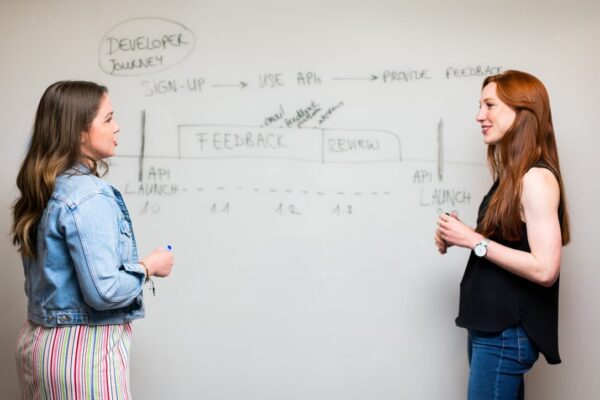When it comes to building a diversity plan, we often look to include candidates from various racial or ethnic backgrounds. We reach out to applicants of differing ages, genders, and educational backgrounds. We consider immigrants, candidates of varying abilities, and candidates from different professional fields.
When it comes to your DE&I strategy, there’s one more piece of the puzzle to consider, though: cognitive diversity.
Never heard of it before? We’ve got you.
In this post, we’re diving into what cognitive diversity is, why you need it, and how you can make it part of your hiring process today.
What’s cognitive diversity?
We know diversity in the workplace is important—it’s better for employees, makes businesses more successful, and attracts more talent.
But what, exactly, is cognitive diversity?
Cognitive diversity is a type of diversity that embraces the different ways people think. It includes team members with varying ideas, problem-solving skills, and thought patterns.
Healthy organizations are made up of members with mixed perspectives and abilities. Pay attention to cognitive diversity when hiring, and you’ll build teams that go beyond the status quo.
What impacts cognitive diversity?
Personal experience, education, and ability shape the unique ways a person thinks. With greater diversity of experience, background, and ability, the more cognitively diverse a team will be. Keep reading to learn more.
Lived experience
Lived experience shapes the way a person views the world. For example, different cultures, birthplaces, or religions will shape each person’s values, opinions, and thought processes.
Race also has a significant impact on someone’s worldview. Socioeconomic background, gender, physical ability, and sexual orientation all play a role too.
Educational background
Whether someone attended a two- or four-year university, a certification program, or received on-the-job training will change how they approach new situations or solve problems.
An employee will have different skill sets or abilities depending on how they were educated. And someone who transfers from another profession will have different perspectives to bring to the table too.
Cognitive function
Different thinking styles, personality styles, or kinds of intelligence will shape how someone thinks. For instance, some individuals handle new information more analytically, while others place greater weight on emotion.
Neurodivergent employees or employees with mental health challenges might process information differently too. Successful teams will value these different approaches to solving problems.
What are the benefits of cognitive diversity?
Cognitive diversity is more than just a nice idea. It has real, positive impacts on both employers and employees.
Cognitive diversity boosts innovation
When you have a cognitively diverse workplace, you have many fresh perspectives to consider. And when it comes to achieving shared goals, teams made up of diverse thinkers are more creative and innovative.
One study showed that diversity increased innovation by 20%, and another showed that cognitively diverse teams solved problems three times faster than more homogenous groups. Prioritizing diversity will give your company the competitive advantage it needs to succeed.
Cognitive diversity strengthens performance
It’s human nature to gravitate towards people who are like us. It’s more comfortable to stick with what’s familiar. However, this bias gets in the way of good work. It lowers innovation. People with helpful, good ideas are less likely to speak up.
Cognitively diverse teams are able to collaborate, learn from one another, and work more effectively. A diverse team is also less likely to be led astray by groupthink.
Cognitive diversity improves company culture
Working closely with others on a diverse team fosters a culture of inclusion. Teams that are exposed to various points of view, different ideas, and unique experiences are able to grow in empathy.
A cognitively diverse workforce is also better for morale. It increases job satisfaction and an individual’s sense of belonging.
If you want innovative, happy employees who feel valued and perform well, focus on building inclusive, diverse teams.
A few challenges
Diverse workplaces are important, but that doesn’t mean they’re easy to achieve. Here are a few of the most common challenges when it comes to pursuing cognitive diversity:
It’s easy to overlook
Cognitive ability can be hard to detect at first glance. While you might approximate someone’s race, gender, or age when you meet them, it takes more time and conversation to understand an individual’s problem-solving ability, personality, or learning style.
Because it takes more effort to uncover, cognitive diversity can be easy to overlook when getting to know potential employees.
There’s potential for conflict
With different personalities and problem-solving skills, collaboration and innovation improve. At the same time, there’s a greater potential for misunderstandings and communication issues.
People might not get along and might need time to learn to work together effectively. This doesn’t mean diversity is not worth the struggle—an adjustment period is often a necessary part of growth.
Bias gets in the way
Unconscious bias is when we are unknowingly drawn to people who look, act, or think like us. This gets in the way of hiring diverse employees.
Another kind of bias is functional fixedness. It’s when we associate one thing—like a tool or object—with only one use. When it comes to problem-solving, functional bias can prevent us from imagining creative solutions. Gathering groups of cognitively diverse people makes it easier to overcome this kind of one-track thinking.
Increase cognitive diversity in your workplace
Now that you know what cognitive diversity is (and why it’s so important), what’s next? Start making improvements right away with these tips.
Adjust hiring practices
A stronger hiring strategy makes for a stronger company. Make sure you’re getting it right from the ground up.
Focus on skills and competencies
When you’re evaluating potential employees, don’t be distracted by things that could lead to biased decisions—like where someone went to school or what prestigious companies they’ve worked for. Instead, pay attention to the applicant’s skills, abilities, and competencies. Do they have the tools they need to do well in a position? Consider reviewing redacted resumes to truly get to know your candidates.
Evaluate soft skills, too. Is your candidate adaptable, coachable, and ready to learn? Use asynchronous interviews to gain insight into candidates early in the interview process. One-way interviews are also a great way to include neurodiverse applicants who would prefer the flexibility and ability to re-record responses.
Shifting your approach will both widen your talent pool and ensure you’re truly hiring the best person for the job.
Consider culture-add, not culture-fit
Don’t just look for applicants who fit in with your current company culture. Pay attention to more important things: hiring value-add people. Include diverse candidates who bring new perspectives, unique backgrounds, or experiences that will shape your culture positively.
Individuals with different viewpoints could also bring much-needed change to your organization. They’ll be able to point out problem spots, ask hard questions, or help fix issues that went unnoticed before.
Enhance your work environment
Fostering cognitive diversity goes beyond great new hires. Support your current employees, too.
Shape a safe working environment
An organization that openly values diversity and open-mindedness will make employees feel more comfortable. They’ll be more likely to explore new ideas, offer suggestions, or think outside the box.
Integrate these values into your company culture. Hold forums that encourage diversity of thought, allow employees to speak freely in meetings, and respond positively to constructive criticisms. Consistently express interest in what all members of your team have to say.
Foster inclusion
Everyone has something to offer. Cultivate relationships across different teams and departments to increase respect for all positions. Assign new roles to members of your team to promote new problem-solving approaches and innovation.
Communicate effectively
Adjust your communication style to accommodate different types of learners. When you’re delivering presentations, include content for both auditory and visual learners. Provide hands-on opportunities. Using case studies, infographics, or role-playing exercises will engage candidates more than blocks of text can.
Reinforce education frequently, allow for self-paced learning, and distribute content that can be consumed on different devices. The more you can adapt to your team’s needs, the better.
Provide education
There’s always more for us to learn, especially when it comes to increasing diversity in our workplaces. Commit to ongoing education.
Seek external expertise
Bring in professionals who can help shape a cognitively diverse, innovative workplace. Look outside your organization for ways to inspire growth.
Engage with thought leaders, diversity-minded professionals, or people who have expertise in team dynamics. Facilitate workshops to spark creative thinking and problem-solving. Present fresh perspectives. And promote a culture of inclusion along the way.
Offer learning opportunities
Give employees the chance to acquire new skills. For instance, certificates, courses, or seminars are all great ways to empower your employees and strengthen your organization. Consider offering incentives to workers that choose to pursue additional education.
Soft skills training can also help cognitively diverse groups thrive. Help teams improve communication and collaboration skills. Encourage cultural intelligence and emotional intelligence. Self-awareness and respect for others will help diverse teams function at an even higher level.
Measure the impact
As you begin to implement changes, don’t forget to keep track of the data. Measure things like employee engagement and satisfaction. Keep tabs on problem-solving conversations, idea generation, and decision-making successes. Get feedback from teams and individual employees. The bigger picture: monitor your organization’s overall growth.
It might take some conscious effort to improve cognitive diversity in your workplace. So start small, if you need to, but keep working towards diversity. It’s well worth it. You’ll get happier employees, more creative teams, fresh ideas, and better business.
We can help, too
Here’s another way to increase cognitive diversity at your workplace: have a conversation with Clovers. At Clovers, we love building diverse teams. And we know that a strong hiring strategy is the first step forward.
With our people-first hiring platform, you’ll be able to review redacted resumes, write inclusive job descriptions, and conduct fair interviews and one-way interviews. Now is the time to reach out for a chat and try a demo today.







